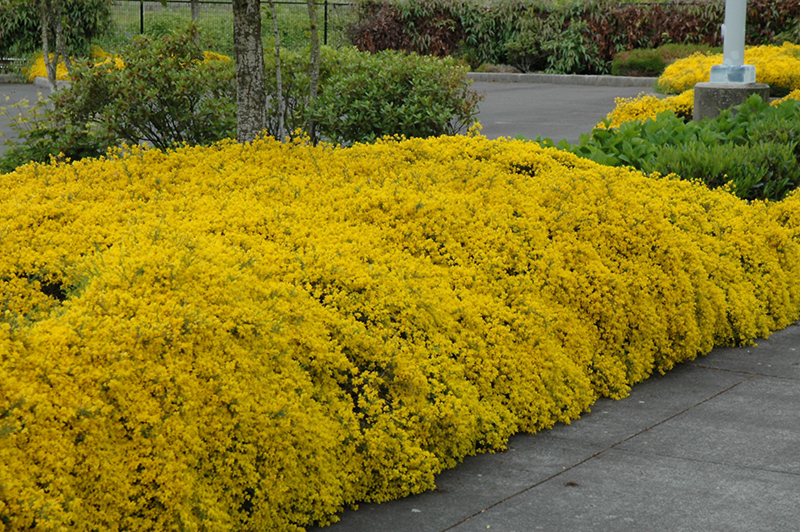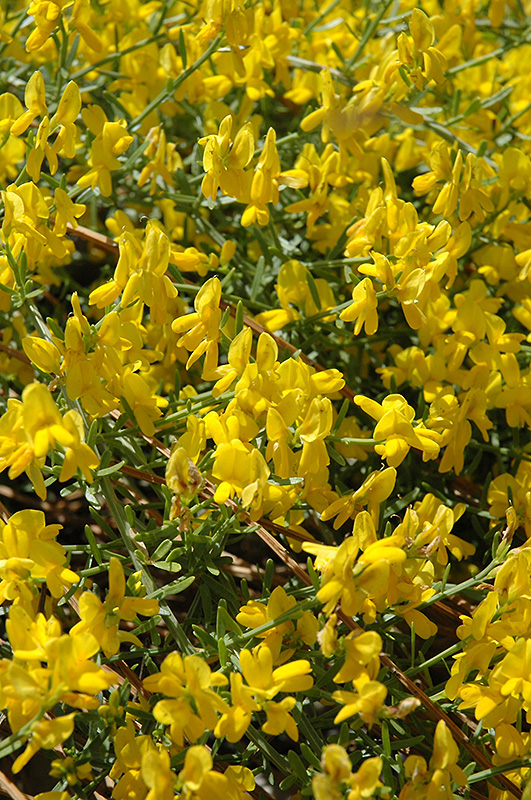Height: 12 inches
Spread: 24 inches
Sunlight:
![]()
Hardiness Zone: 4
Other Names: Woadwaxen
Description:
A gracefully low-spreading groundcover which is drenched in bright yellow flowers along upright stems for a long period in spring, very fine texture; requires full sun and well-drained low fertility soil, the ultimate choice for poor dry soils
Ornamental Features
Lydia Broom features showy yellow pea-like flowers along the branches from mid to late spring. It has light green deciduous foliage. The small oval leaves do not develop any appreciable fall color. The lime green stems can be quite attractive.
Landscape Attributes
Lydia Broom is an open multi-stemmed deciduous shrub with a ground-hugging habit of growth. It lends an extremely fine and delicate texture to the landscape composition which should be used to full effect.
This shrub will require occasional maintenance and upkeep, and should only be pruned after flowering to avoid removing any of the current season's flowers. It has no significant negative characteristics.
Lydia Broom is recommended for the following landscape applications;
- Mass Planting
- General Garden Use
- Groundcover
Planting & Growing
Lydia Broom will grow to be about 12 inches tall at maturity, with a spread of 24 inches. It tends to fill out right to the ground and therefore doesn't necessarily require facer plants in front. It grows at a slow rate, and under ideal conditions can be expected to live for approximately 20 years.
This shrub should only be grown in full sunlight. It prefers dry to average moisture levels with very well-drained soil, and will often die in standing water. It may require supplemental watering during periods of drought or extended heat. It is particular about its soil conditions, with a strong preference for sandy, alkaline soils, and is able to handle environmental salt. It is highly tolerant of urban pollution and will even thrive in inner city environments. Consider applying a thick mulch around the root zone in both summer and winter to conserve soil moisture and protect it in exposed locations or colder microclimates. This species is not originally from North America.


